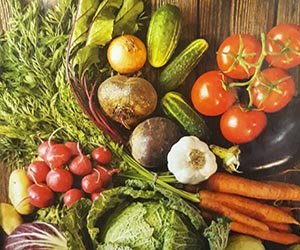Vegetable nutrition facts
What's the importance of incorporating a diet rich in vegetable-nutrition?
What advantages do vegetables offer for our health?
Indeed!
Fresh vegetables contain nearly all the essential nutrients our body needs, resulting in significant health benefits. They serve as a rich source of vitamins, minerals, antioxidants, and dietary fiber.
 |
Vegetables, similar to fruits, are low in calories and fats, yet they are rich sources of essential vitamins and minerals. The category of Green-Yellow-Orange vegetables stands out as a particularly abundant source of nutrients, including calcium, magnesium, potassium, iron, beta-carotene, vitamin B-complex, vitamin C, vitamin A, and vitamin K.
In line with fruits, vegetables also house a plethora of antioxidants. These valuable phytochemical compounds serve a dual purpose. Firstly, they shield the human body from oxidative stress, diseases, and cancers. Secondly, they bolster the body's immunity, enabling it to combat these health challenges effectively.
Furthermore, vegetables are brimming with both soluble and insoluble dietary fibers collectively known as non-starch polysaccharides (NSP), such as cellulose, mucilage, hemi-cellulose, gums, and pectin, among others. These substances absorb excess water in the colon, maintain optimal moisture levels in fecal matter, and facilitate its smooth passage out of the body. Consequently, an adequate fiber intake helps prevent conditions like chronic constipation, hemorrhoids, colon cancer, irritable bowel syndrome, and rectal fissures.
Opt for green vegetables to support your journey towards better health and fitness!
Here is an impressive list of vegetables with detailed illustrations of their health benefits and nutrition facts:
Vegetable nutrition has garnered widespread attention from both health-conscious individuals and food scientists due to their well-established health benefits. Most commonly consumed vegetables are remarkably low in both calories and saturated fats. For instance, watercress and celery contain a mere 11 and 16 calories per 100 grams, respectively. A lengthy roster of vegetables boasts less than 20 calories per 100 grams, including bottle gourd, bitter melon, cabbage, Chinese cabbage, bok-choy, eggplant, endive, spinach, summer squash, swiss chard (silverbeet), and more. Scientific research has demonstrated that these low-calorie yet nutrient-rich foods contribute to maintaining optimal health and preventing diseases.
Additionally, the human body expends a significant amount of energy on the metabolic process of food, known as BMR or Basal Metabolism Rate. Consider this: by incorporating a substantial amount of vegetable nutrition into your daily diet, you may actually end up losing more weight than you consume. Yes, that's right! This is the underlying principle behind the concept of "negative calorie foods."
What's the Ideal Daily Vegetable Intake?
Aim to include a minimum of 5-7 servings of fresh vegetables in your daily diet. Current federal dietary guidelines recommend increasing this to a minimum of nine servings of both vegetables and fruits daily. It's also beneficial to prioritize seasonal vegetables and introduce variety into your vegetable choices. Yellow and orange vegetables are abundant in Vitamin-A, α, ß-carotenes, zeaxanthin, and crypto-xanthins, while dark-green vegetables provide valuable minerals and a rich array of phenolic, flavonoid, and anthocyanin antioxidants.
Selection of vegetables
If available, opt for organic vegetables from local farms to maximize the health benefits. These can often be reasonably priced when sourced from nearby farm owners. Organic produce may be smaller in size but boasts a robust flavor and contains a high concentration of vitamins, minerals, and a wealth of health-enhancing antioxidants.
When shopping in markets, be sure to purchase small quantities to ensure they remain fresh for a day or two. There's no sense in consuming vegetables that have gone bad!
Select vegetables that exhibit signs of freshness, vibrant colors, and a rich flavor, and feel substantial when held in your hands.
Inspect them closely for any blemishes, spots, fungal mold, or indications of pesticide residue. Opt for whole vegetables rather than sections of them, such as a whole pumpkin, for instance.
Preparing and Preserving Vegetables
Once you've selected your vegetables, the first step is to ensure they are thoroughly cleaned, especially green leafy varieties. Rinse them in saltwater for a few minutes and gently swish them in cool water until you are satisfied with their cleanliness. This helps remove any dirt, sand, or residual chemical sprays.
It's essential to use them promptly while they are fresh for two main reasons. Firstly, some vegetables have a very short shelf life. Secondly, the health-enhancing properties of vegetables tend to decline over time. However, if you need to store them, place them inside plastic wrap or zip pouches to preserve their nutrition for shorter periods until you're ready to use them.
Read further on:
≺≺- EWG's- The Clean Fifteen: Fruits and Vegetables with the Lowest Pesticide Levels.
≺≺ How important is fiber in the diet?
≺≺ How Shopping at Farmers' Markets Benefits Your Health?
≺≺ Back to Home page from Vegetable Nutrition.
Further Resources:
1. Stanford School of Medicine Cancer information Page- Nutrition to Reduce Cancer Risk.













































